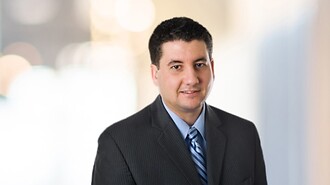
Often times, both contract and tort claims co-exist in a subrogation matter and the line between the two can be blurred. This is especially true in the context of damages resulting from new home construction defect claims. However, states are increasingly attempting to define the scope of when the “gist of the action” is based in contract only. In Tingler v. Graystone, 834 S.E.2d 244 (Va. 2019), the Supreme Court of Virginia defined that scope in terms of new home construction. The court defined the “source of duty rule” by holding that claims of nonfeasance sounding only in contract do not give rise to an independent tort claim. The court also reiterated its application of the economic loss doctrine, stating that, when negligent actions result in damage to property other than the product itself, there can be a viable tort claim.
In this case, George and Crystal Tingler (the Tinglers) entered into a contract with Graystone Homes, Inc. (Graystone) in 2009 to build a new home on the property owned by the Tinglers’ family-run company, Belle Meade Farm, LLC (Belle Meade). In 2010, the Tinglers discovered leaks at their patio French doors in their dining room. They reported the issue to Graystone, who applied additional sealants and replaced damaged flooring. In 2011, the Tinglers again discovered leaks in the dining room, and again reported it to Graystone. Graystone responded by adding flashing and replacing hardwood flooring. The Tinglers and their children suffered medical symptoms in 2014 and eventually confirmed the presence of mold throughout the home and moisture in the area of the patio French doors, windows and hardwood flooring. That October, Graystone conducted remediation work in response to the Tinglers’ further reports, including removing and reinstalling the French doors (with drain pans underneath), the windows and hardwood flooring and, eventually, installing additional sealants and applying anti-microbial solution to help clean up the mold. Graystone came out later that month and, among other actions, cut a hole in the wall, revealing a large section of moldy insulation. Graystone placed containment sheeting in the dining room in November of 2014 and the Tinglers moved out of the home a week later. After moving out, inspectors confirmed elevated levels of mold and moisture and determined that Graystone improperly applied the containment sheeting.
In 2015, the Tinglers filed suit against Graystone, alleging tort and contract claims based both in personal injury and property damage.[1] The circuit court, based on the source of duty rule, sustained the defendant’s demurrers on the Tinglers’ tort claims. The court again sustained the demurrers after the Tinglers filed amended complaints. The Virginia Supreme Court then took up the appeal.
The court first reasoned that while negligent acts of misfeasance during the construction process can implicate tort liability for foreseeable personal injuries, only “peculiar circumstances” that create an inherently or imminently dangerous condition can be the basis for tort liability after the delivery of the new home. In this case however, the court held that allegations that Graystone made the original condition worse in its subsequent repairs and created new injuries or aggravated preexisting injuries could theoretically support a tort claim.
The court went on to define the economic loss doctrine in the context of construction as the preclusion of tort recovery for economic loss attributable to the alleged breach of contract or to the home itself. However, the court adopted the “other-property exception” to the doctrine, holding that to the extent Graystone’s misfeasance in its repairs caused personal-property damage, the Tingler’s tort claims were viable.
These holdings are important because they set the parameters for pleading tort and contract claims in Virginia. In a new home construction case, where there is almost always an underlying contract involved, subrogation practitioners need to mine the facts of their case to determine if there is a legitimate basis to allege an independent tort claim. To do so after delivery of the new home, they will need to prove such peculiar circumstances as discussed by the court. Furthermore, practitioners should be aware that they can avoid preclusion of their tort claims based on the economic loss doctrine when they are claiming personal property damage.
[1] There were several complaints filed by the Tinglers individually and as Belle Meade. Since the procedural bases for this occurring pertain to the standing-based arguments at issue in this case and not the court’s tort versus contract analysis, the details of those pleadings will not be discussed.
Recent Posts
Categories
- Products Liability
- CPSC Recalls
- Subrogation
- Construction Defects
- Statute of Limitations-Repose
- California
- New York
- Evidence
- Minnesota
- Experts – Daubert
- Maryland
- Jurisdiction
- Rhode Island
- Condemnation
- Experts - Reliability
- Podcast
- CPSC Warning
- Anti-Subrogation Rule
- Workers' Compensation
- Uncategorized
- Negligence
- Contracts
- Cargo - Transportation
- Landlord-Tenant
- Sutton Doctrine
- Waiver of Subrogation
- Arbitration
- Pennsylvania
- Texas
- AIA Contracts
- Florida
- Economic Loss Rule
- Malpractice
- Wyoming
- Spoliation
- Tennessee
- Water Loss
- Indiana
- Michigan
- Comparative-Contributory Negligence
- Contribution-Apportionment
- Assignment
- Missouri
- Parties
- Public Policy
- Arkansas
- Civil Procedure
- New Jersey
- Res Judicata
- Product Liability
- Damages
- Damages – Personal Property
- Arizona
- Certificate of Merit
- Litigation
- West Virginia
- Oklahoma
- Builder's Risk
- Contractual Subrogation
- Equitable Subrogation
- Georgia
- Illinois
- Insurable Interest
- Limitation of Liability
- Mississippi
- Made Whole
- Delaware
- Settlement
- Subrogation – Equitable
- Construction
- Premises Liability
- Joint or Several Liability
- Montana
- Duty
- Privity
- New Mexico
- Right to Repair Act
- Massachusetts
- Landlord
- Tenant
- Building Code
- Causation
- Architects-Engineers
Tags
- Subrogation
- Products Liability
- Podcast
- Subro Sessions
- Construction Defects
- California
- Product Liability
- New York
- Experts
- Minnesota
- Circumstantial Evidence
- Evidence
- Malfunction Theory
- Jurisdiction
- Texas
- Inverse Condemnation
- Maryland
- Statute of Repose
- Waiver of Subrogation
- Rhode Island
- Condemnation
- Contracts
- Experts – Daubert
- Jurisdiction - Personal
- CPSC Recalls; Products Liability
- Negligence
- Landlord-Tenant
- Pennsylvania
- Civil Procedure
- Georgia
- Amazon-eBay
- Economic Loss Doctrine
- Certificate of Merit
- Experts - Reliability
- Statute of Limitations - Accrual
- Made Whole
- Louisiana
- Florida
- Anti-Subrogation Rule
- Construction Contracts
- Illinois
- New Jersey
- Parties
- Ohio
- Experts – Qualifications
- Right to Repair Act
- Statute of Limitations - Tolling
- Contracts - Enforcement
- Indiana
- Design Defect
- Sutton Doctrine
- West Virginia
- Arizona
- Spoliation
- Water Damage
- Connecticut
- Damages
- Privity
- Evidence - Hearsay
- Condominiums
- Massachusetts
- Tennessee
- Statute of Limitations
- Limitation of Liability
- workers' compensation subrogation
- Apportionment
- Exculpatory Clause
- Arbitration
- Negligence – Duty
- Wisconsin
- Expert Qualifications
- Workers’ Compensation
- Amazon
- Public Policy
- Missouri
- Negligent Undertaking
- Statute of Limitations - Contractual
- Delaware
- Indemnification
- Architects-Engineers
- Loss of Use
- Vehicles
- Washington
- AIA Contract
- Settlement
- Res Judicata
- Warranty - Implied
- Statute of Limitations - Repose
- Improvement
- Michigan
- Idaho
- Malpractice
- Internet Sales
- Non-Party at Fault
- Spoliation – Fire Scene
- Gross Negligence
- Mississippi
- Statute of Limitations – Discovery Rule
- Malfunction Theory; Design Defect
- Cargo-Transportation
- Contribution
- Independent Duty
- Implied Warranty of Habitability
- Warranty - Construction
- North Carolina
- Utah
- Standing
- Comparative Fault
- Res Ipsa
- New Mexico
- Contracts - Formation
- Unconscionable
- Failure to Warn
- Manufacturing Defect
- Pleading
- Removal
- Entire Controversy Doctrine
- Motion to Intervene
- Nevada
- Subrogation; High-Net-Worth; Damages; Art; Cargo-Transportation; Anti-Subrogation Rule
- Virginia
- Burden of Proof
- Products Liability – Risk-Utility
- Lithium-ion battery
- New Hampshire
- Anti-Subrogation Rule; Wyoming; Landlord-Tenant; Sutton Doctrine
- Oklahoma
- Sanctions
- Builder’s Risk
- Contractual Subrogation
- Equitable Subrogation
- Insurable Interest
- Joint-Tortfeasors
- Arkansas
- Kentucky
- Daubert
- Fire - Cigarettes
- Colorado
- Causation
- Discovery-Sanctions
- Third Party
- Accepted Work
- Montana
- Independent Contractor
- Privilege
- Betterment
- Damages-Code Upgrades
- Insurance Coverage
- First Party Claims
- Forum-Venue
- Warranty – Express
- AIA Contracts
- Anti-Indemnity Statutes
- Discovery - Experts
- Products Liability - Foreseeability
- MCS-90
- Substantial Completion
- Reimbursement
- Assignment
- Counterclaim
- Products Liability; Malfunction Theory
- Economic Loss Rule
- Unfair Trade Practices
- Evidence – Probative Value
- Parties – Real Party in Interest
- Status of Repose
- Evidence - Public
- Construction Defects - Fixtures
- Subrogation – Equitable
- Additional Insured
- Contract
- Trespass
- COVID-19
- Damages – Emotional Distress
- Incorporation by Reference
- Oregon
- Third Party Spoliation
- No-Fault Subrogation
- Products Liability; Mississippi
- Jury Instructions
- Food and Beverage
- California Court of Appeals Holds Subrogating Carrier Cannot Assert Claims of Its Suspended Insured
- South Carolina
- Debt Collection
- Montreal Convention
- Medical Benefits
- Immunity
- Products Li
- Wyoming
- Release
- Liens
- Kansas
Authors
Archives
- April 2025
- March 2025
- February 2025
- January 2025
- December 2024
- November 2024
- October 2024
- September 2024
- August 2024
- July 2024
- June 2024
- May 2024
- April 2024
- March 2024
- February 2024
- January 2024
- December 2023
- November 2023
- October 2023
- September 2023
- August 2023
- July 2023
- June 2023
- May 2023
- April 2023
- March 2023
- February 2023
- January 2023
- December 2022
- November 2022
- October 2022
- September 2022
- August 2022
- July 2022
- June 2022
- May 2022
- April 2022
- March 2022
- February 2022
- January 2022
- December 2021
- November 2021
- October 2021
- September 2021
- August 2021
- July 2021
- June 2021
- May 2021
- April 2021
- March 2021
- February 2021
- January 2021
- December 2020
- November 2020
- October 2020
- September 2020
- August 2020
- July 2020
- June 2020
- May 2020
- April 2020
- March 2020
- February 2020
- January 2020
- December 2019
- November 2019
- October 2019
- September 2019
- August 2019
- July 2019
- June 2019
- May 2019
- April 2019
- March 2019
- February 2019
- January 2019
- December 2018
- November 2018
- October 2018
- September 2018
- August 2018
- July 2018
- June 2018
- May 2018
- April 2018
- March 2018
- February 2018
- January 2018
- December 2017
- November 2017
- October 2017
- September 2017
- August 2017
- July 2017
- June 2017
- May 2017
- April 2017
- March 2017
- February 2017
- January 2017
- December 2016
- November 2016
- October 2016
- September 2016
- August 2016
- July 2016
- June 2016
- May 2016
- April 2016
- March 2016
- February 2016
- January 2016
- December 2015
- November 2015
- October 2015
- September 2015
- August 2015
- July 2015
- June 2015
- February 2015
- January 2015
- November 2014
- October 2014
- September 2014
- May 2014
- April 2014
- December 2013
- August 2013
- May 2013
- February 2013


